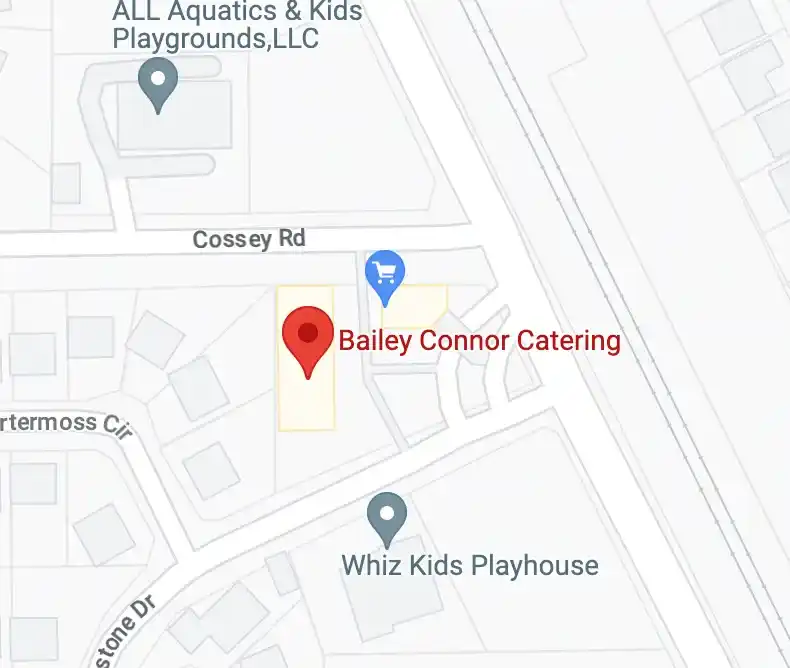Key Takeaways
- Box Lunches Efficiency vs. Environmental Impact: While box lunches cater to our fast-paced world by offering convenience and variety, they also pose significant environmental challenges due to the sustainability of their packaging. Emphasizing the balance between convenience and sustainability is crucial.
- Sustainable Packaging Innovations: Advancements in biodegradable, compostable, and reusable packaging materials are pivotal. These innovations are set to revolutionize the food industry by minimizing waste and reducing the environmental footprint of convenience eating.
- The Role of Circular Economies: Circular economies within the food industry present a sustainable model that minimizes waste and maximizes resource use. This involves a shift towards practices that support recycling, repurposing, and the efficient use of food products and packaging.
- Collective Effort for a Greener Future: The transition to more sustainable eating and packaging practices requires a collective effort from consumers, businesses, and policymakers. Bailey Connor Catering's commitment to eco-friendly practices showcases the potential impact of this collaborative approach.
- Actionable Steps Towards Sustainability: Everyone can encourage the use of sustainable packaging, support local and eco-friendly food sources, and be mindful of the environmental impact of their food choices. Opting for caterers and food services that prioritize sustainability can drive broader change in the industry.
Introduction
Overview of Box Lunches in Today's Fast-Paced World
In the hustle of modern life, box lunches have emerged as the quintessential emblem of convenience, providing a swift and effortless solution to our daily meal requirements. This innovation mirrors our fast-paced society's needs, offering a blend of efficiency and variety to cater to our increasingly busy schedules.
However, box lunches' convenience comes with challenges, particularly regarding the environmental impact of their packaging. As we continue to embrace these quick meal solutions, it becomes imperative to balance convenience with sustainability, exploring how our choices affect the broader ecological landscape.
The Growing Concern: Environmental Impact of Convenience
The rise of box lunches has brought to the forefront the critical issue of sustainability and the environmental impact of single-use packaging. The convenience these meals offer often results in significant waste, raising concerns about our consumption patterns and their effects on the planet.
As awareness around eco-friendly practices grows, there's a collective movement towards sustainable alternatives that can reduce our ecological footprint. Embracing sustainable practices in our dining choices reflects a commitment to both convenience and eco-friendly solutions that ensure a sustainable future for the environment. This shift towards sustainability is not just a passing trend but a necessary evolution in how we consider food and convenience.
The Evolution of Box Lunches
A Brief History of Convenience Eating
The concept of convenience eating has roots that stretch far back into history, evolving alongside society's shifts and changes. Initially, meals prepared outside the home were a rarity, reserved for travelers and celebrations. The demand for quick, efficient eating options grew as industrialization progressed, giving birth to the modern Box Lunches. This transformation reflected not just a change in eating habits but a broader societal adaptation to a faster pace of life.
Today, Box Lunches are not merely a solution to hunger; they represent a culmination of centuries of culinary innovation and social change. From simple beginnings with street vendors and portable food items, we've arrived where food convenience aligns with bustling lifestyles, offering a blend of nutrition, taste, and speed.
Box Lunches Today: From Schools to Corporate Meetings
Box Lunches have seamlessly integrated into various aspects of modern life, underscoring their versatility and convenience. In schools, they simplify meal planning while accommodating dietary needs, allowing students to focus on learning. In the corporate world, they facilitate meetings and events, providing nourishment and corporate catering without disrupting productivity. This widespread adoption speaks volumes about the service these meals provide, transcending traditional dining setups to cater to the needs of diverse groups.
The evolution of Box Lunches reflects our society's dynamic nature, adapting to meet the demands of different settings. Whether it's a school cafeteria or a high-stakes corporate meeting, these meals dine on the principles of efficiency and adaptability, ensuring that no matter the setting, quality and convenience go hand in hand.
The Numbers: How Many Box Lunches Are Consumed Annually?
Estimating the exact number of Box Lunches consumed annually presents a challenge, given their widespread use across numerous sectors. However, millions of these convenient meals cater to people's daily needs worldwide. The popularity of Box Lunches underscores a significant trend in our eating habits, where food convenience becomes as much a priority as taste and nutrition.
This growing demand for Box Lunches mirrors our fast-paced world, where time is precious. It reflects a society that values efficiency and practicality without compromising on the quality of the lunch experience. As we continue to dine in this accelerated lifestyle, Box Lunches stand out as a testament to our ability to adapt and innovate in the face of changing times.
Unwrapping the Environmental Footprint of Box Lunch Packaging
Understanding the Components of Box Lunches
All box lunches' components play a pivotal role in their convenience. From the outer packaging to the utensils and the containers holding the food, each element is designed for single-use, prioritizing ease and hygiene over sustainability. While these components ensure service efficiency and cater to our fast-paced lives, they pose significant waste management challenges. Acknowledging the composition of these lunches is the first step towards identifying biodegradable and more sustainable packaging solutions.
Efforts to reduce the environmental impact of box lunches must focus on the packaging. Traditional materials like plastics and polystyrenes are convenient but harmful over time. A greener future for box lunches necessitates a shift towards packaging solutions that are both sustainable and capable of maintaining the quality and safety of the meals. Biodegradable, compostable, or reusable packaging emerges as viable alternatives, aligning with the growing consumer demand for practices that contribute to a greener planet.
The Life Cycle of Disposable Packaging
The life cycle of disposable packaging encompasses more than just the disposal stage; it includes the production, usage, and breakdown processes, each contributing to the overall environmental impact. Most of these packaging materials are not designed with sustainability in mind, leading to increased waste and a significant use of non-renewable resources. A sustainable packaging solution must address these concerns at every life cycle stage, from reducing the materials used to ensuring that the packaging can be recycled or biodegraded efficiently.
Transitioning towards sustainable packaging solutions in the packaging industry involves rethinking how products are designed and delivered. Smart packaging solutions that minimize waste while maintaining product integrity are key to this transition. Such innovations could include packaging that eliminates the need for single-use materials, used packaging that can be returned or repurposed, and packaging made from durable materials that consumers can fold and return after use. This shift reduces waste and encourages consumers to participate actively in sustainability efforts.
Consequences of Non-Biodegradable Materials
The widespread use of non-biodegradable materials in box lunch packaging has far-reaching environmental consequences. These materials often end up in landfills, oceans, and other natural habitats, which can take centuries to decompose, releasing toxic chemicals. The packaging solution for a greener future requires moving away from such materials and towards alternatives that can break down harmlessly in the environment.
Sustainable packaging, reusable and returnable packaging, and packaging made from durable materials are not just concepts but necessary steps toward minimizing the issue of packaging waste. Businesses and consumers can contribute to a greener and more sustainable world by reducing waste and eliminating the need for single-use packaging materials. It's about creating a packaging system that supports the circular economy, where used packaging doesn't become waste but a resource for future use.
The Hidden Costs of Convenience
Carbon Footprint of Producing and Transporting Box Lunches
The production and transportation of box lunches represent a significant source of carbon emissions, a core component of their environmental footprint. From the energy-intensive processes required to manufacture packaging materials to the fossil fuels burned to distribute these meals across cities and regions, each step contributes to the overall carbon footprint. Sustainable alternatives and efficiencies in these processes play a crucial role in reducing this impact, making it imperative for producers and consumers to consider more environmentally friendly options.
Moreover, selecting ingredients that align with local sourcing and lower carbon production methods can greatly mitigate the environmental effects associated with box lunches. By prioritizing locally sourced produce and reducing the reliance on heavily processed foods, catering services can significantly lower the carbon emissions associated with food production. This strategic approach supports local agriculture and reduces the transportation distances required, further reducing greenhouse gas emissions.
Waste Management Challenges: Disposal and Recycling Issues
Disposal and recycling of box lunch packaging present considerable challenges in waste management. The diversity of materials, including plastics, metals, and paper, complicates recycling efforts and frequently leads to increased landfill waste. Addressing these challenges requires innovative waste management strategies and a shift towards packaging materials that are easier to recycle or compost. Developing and adopting such strategies play a crucial role in minimizing the environmental footprint of box lunches.
Recycling programs and facilities must be equipped to handle the specific types of waste generated by box lunches, necessitating collaboration between governments, businesses, and consumers to create effective recycling streams. Encouraging consumers to sort and dispose of their waste properly can significantly align with efforts to improve recycling rates. Furthermore, educating stakeholders about the importance of recycling and the impact of improper disposal is essential in fostering a culture of environmental responsibility.
Impact on Wildlife and Natural Habitats
The environmental footprint of box lunches extends beyond carbon emissions and waste management issues to include significant impacts on wildlife and natural habitats. The improper disposal of packaging materials can lead to pollution in natural ecosystems, affecting terrestrial and aquatic wildlife. Plastics, in particular, pose a severe threat to marine life when they enter waterways and oceans, leading to ingestion and entanglement hazards for many species. Addressing this issue is critical to preserving biodiversity and maintaining healthy ecosystems.
Efforts to mitigate these impacts include using biodegradable packaging options and implementing clean-up initiatives to remove litter from natural habitats. While beneficial, these measures must be part of a larger, comprehensive strategy to reduce waste production at the source. The catering industry can significantly reduce its impact on wildlife and natural environments by choosing materials that align with environmental sustainability goals and promoting practices crucial in reducing habitat disruption.
Eco-Friendly Alternatives to Traditional Box Lunches
Innovations in Biodegradable and Compostable Packaging
The shift towards biodegradable and compostable packaging is gaining momentum as businesses and consumers seek alternatives to traditional box lunch solutions. This transition is driven by realizing that sustainable practices must be integrated into every aspect of food service, from production to disposal. Biodegradable materials, such as plant-based plastics made from seaweed products, are at the forefront of this innovation, offering a way for a more sustainable future without sacrificing convenience or food safety. These materials break down much faster than conventional plastics, leaving a minimal environmental footprint.
Moreover, developing compostable packaging solutions is transforming waste into a resource. By harnessing the power of composting, we can return nutrients to the soil and reduce greenhouse gas emissions associated with landfill waste. This approach reduces the amount of waste generated and aligns with the growing consumer demand for responsibility in environmental stewardship. As consumers become more conscious of their choices, the availability of compostable options encourages a shift in consumer behavior towards more eco-friendly practices.
The Rise of Reusable Box Lunch Containers
Adopting reusable box lunch containers represents a significant stride towards minimizing the environmental impact of convenience meals. These reusable packaging solutions provide an effective alternative to traditional disposable options, significantly reducing the need for new materials and the waste associated with single-use packaging. Made from stainless steel, glass, or durable plastics, these containers can significantly reduce their packaging footprint over time, offering both environmental and economic benefits.
Initiatives by major consumer goods companies to create programs for reusable containers highlight the growing recognition of businesses' role in promoting sustainability. These programs often involve systems where packaging can be easily folded and returned or even programs where consumers can receive incentives for participating. This model not only reduces waste but also encourages consumers to engage actively in reducing their environmental footprint. The move towards durable and reusable packaging represents a paradigm shift in how we think about food packaging, emphasizing the importance of lifecycle management in achieving sustainability goals.
Pioneering the Future of Sustainable Catering
Predictions for Sustainable Eating Practices
The trajectory towards sustainable eating practices will transform the catering and food service industry. Innovations focusing on reducing food waste and embracing plant-based options are becoming increasingly prevalent, highlighting a shift towards more eco-conscious dining experiences. This movement is driven by a growing awareness of the environmental impact of food production and a collective desire to minimize carbon footprints. As consumers become more informed, the demand for menus prioritizing sustainability over excess is expected to rise, influencing caterers to adopt green practices and offer a range of environmentally friendly options.
The future of sustainable eating also involves a closer relationship between food providers and local farmers, promoting a farm-to-table practice that supports local economies and reduces transportation emissions. Planning events with sustainability in mind will involve choosing the right food and considering how it's sourced and served. Caterers in Houston will likely invest in supplies and equipment designed to withstand multiple uses, minimizing waste and encouraging a cycle of reuse that benefits both the environment and the bottom line.
The Potential of Circular Economies in the Food Industry
Circular economies within the food industry presents a promising solution to many environmental challenges. By rethinking the lifecycle of food products, from production to consumption, businesses can create a system where waste is minimized and resources are maximized. This idea involves recycling and repurposing food waste into new products, such as turning leftover produce into compost for agricultural use. Such practices foster sustainability and drive innovation, creating new avenues for businesses to thrive while being eco-conscious.
Implementing circular economies requires collaboration across the entire supply chain, from farmers and producers to caterers and consumers. The food industry can make significant strides toward a more sustainable future by sharing tips and best practices and developing events and planning tools promoting sustainability. This approach reduces the waste generated and helps conserve resources, proving that economic success and environmental stewardship can go hand in hand.
Final Thoughts: The Collective Effort Towards a Greener Planet
As Bailey Connor Catering, we are committed to leading by example in the push for a more sustainable future. Understanding the importance of collective effort, we aim to inspire our industry peers and valued clients to embrace eco-friendly practices. Our dedication to sustainability is reflected in every service aspect, from sourcing supplies locally to offering reusable and compostable packaging options. Small changes can lead to significant impacts, and we are proud to offer various catering services that align with our green philosophy.
Our journey towards sustainability is ongoing, and we continuously seek innovative ways to reduce our environmental footprint. Whether it's through waste reduction, energy conservation, or fostering partnerships with like-minded suppliers, our goal is not only to meet but exceed the eco-conscious expectations of our clients. By planning and executing events with sustainability at the forefront, Bailey Connor Catering hopes to set a high standard for responsible Houston catering practices for social, corporate, weddings and any special occasions. Together, we can make a difference, moving towards a zero-waste future and a greener planet for future generations.






